The REDIPhE research made use of several, well-coordinated tools, organised along 3 paths.
(1) Path Bio-Mech-1: defining the external mechanical loads experienced by the head during situations that cause injury
- The medical team interviewed a large number of their patients to identify a certain number of accident cases for which a precise reconstruction is possible both for the accident scenario and for its consequences in terms of injury to the patients. The medical team made sure that all ethical requirements are fully satisfied.
- The medical team and the engineering team interacted to define multi-body models to be used to reproduce the previously identified accident cases. Multi-body software, such as ADAMS or MYDIMO, were used to reproduce the overall dynamics of the human body and to accurately evaluate the acceleration imposed to the head by the impact: the acceleration constituted the load condition for the head models to be developed in the next point (2).
(2) Path Bio-Mech-2: using models of the brain to estimate how these external mechanical loads transfer to mechanical conditions (e.g. strain, strain rate, stress, etc.) in the brain at the tissue scale
- The medical team selected from their wide archive of images those of three individuals (man, woman and teenager) which are particularly well defined.
- The engineering team and the medical team worked together to generate a computational model based on the images of the three individuals mentioned at the previous point. Software programs such as ‘Freesurfer’ (Fischl et al. 2004) are available for that purpose. The models describes in detail many anatomic features, which are relevant to a correct description of the brain mechanics such as: scalp, skull, brain (grey and white matter), meninges, subarachnoid space and ventricles, as well as anatomical features such as sulci.
- The engineering team, with the help of the medical team and that of the Centre for Mechanics of Biological Materials, defined the mechanical properties of all materials in the models. A finite element software, such as Ls-Dyna or Abaqus, were used to apply to the refined head models the correct linear and rotational accelerations. To account for suitable numerical simulations of impacts on brain tissue it is mandatory to develop suitable constitutive models and implement these models in the framework of a finite element software. Brain tissue shows anisotropic mechanical behaviour due to the presence of spatially oriented structures. In particular, the effects of axonal fibres can be described by assuming the hypothesis of transverse isotropy. Furthermore, the response of brain tissue show stress-strain nonlinear behaviour and the strain rate can play an important role in the mechanical response. Due to the above-mentioned characteristics, anisotropic visco-hyperelastic constitutive model were developed, according to a theory that includes large strains. The constitutive models were fitted to experimental data by specific algorithms, considering tensile, compressive and shear tests results that are at disposal in the current scientific literature. This made it possible to evaluate optimal sets of the constitutive parameters. The constitutive models were implemented in general purpose finite element codes by using in-built numerical formulations and/or by means of specific user subroutines. The mechanical effects on brain tissue under acceleration were numerically evaluated considering appropriate variables, for example strain and/or stress components.
(3) Merging of Paths Bio-Mech-1 and 2: using tissue tolerance criteria to determine the regions of the brain that will be injured or impaired as a result of the external applied loading.
- All involved teams defined, based on what available in the literature, tissue tolerance criteria to be applied in the FEM computations. Different strain measures are usually proposed to identify damage in the brain tissue, such principal strains, shear strains or axonal strains. Therefore, tolerance criteria based on the most suitable measure have to be identified. The accident cases identified in the path Bio-Mech-1 were used to define the load conditions on the head models. The high fidelity head models were then loaded in finite element simulations, by the translational and rotational accelerations obtained from the reconstruction of the 8-10 well defined impacts. The three high fidelity models were validated by comparing the data about position, size and seriousness of the injuries in real-life accidents with the information on maximum strains and strain-rates in the tissues of the mathematical models themselves. It was expected that a sensitivity study will have to be carried out to determine the numerical values of some of the constitutive parameters.
These three steps constitute Paths Bio-Mech-1 and Bio-Mech-2 of the research: the generation of validated and reliable head models and the acquisition of the capacity to use in a coordinate way multi-body and finite element software to apply to the head models load conditions representative of realistic scenarios. The brain are very detailed, the required detail level was reached by a model containing at least 1.5 million degrees of freedom.
Another step of the research is to couple the highly detailed head models with innovative helmet models and the performance of the introduced innovations was assessed in terms of the variations they cause in the strains and the strain-rates induced by impacts in the tissues of the brain. The innovations in the helmets were discussed with the industrial partner, to avoid unrealistic or impractical innovations. The strain distributions in the brain was discussed with the medical team.



